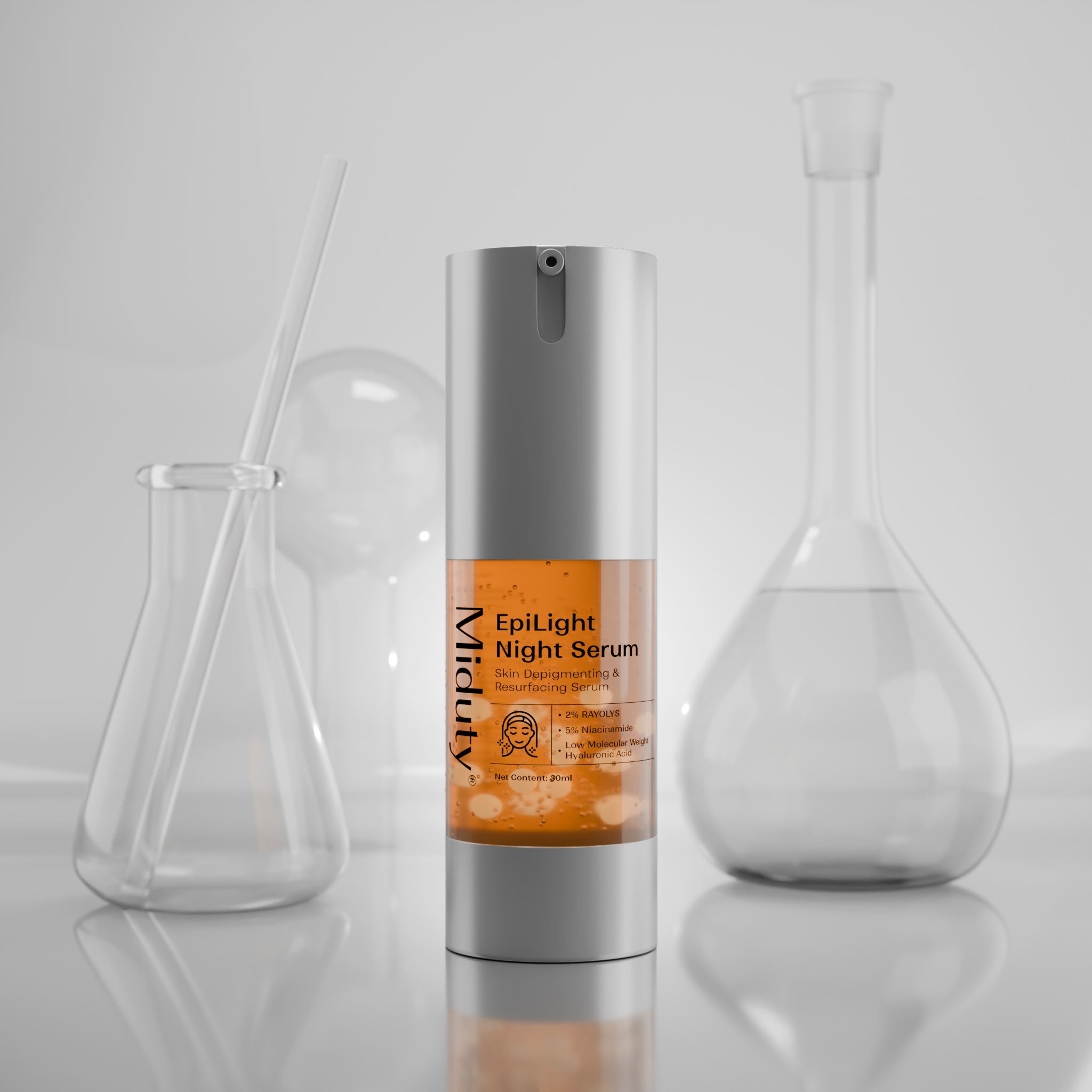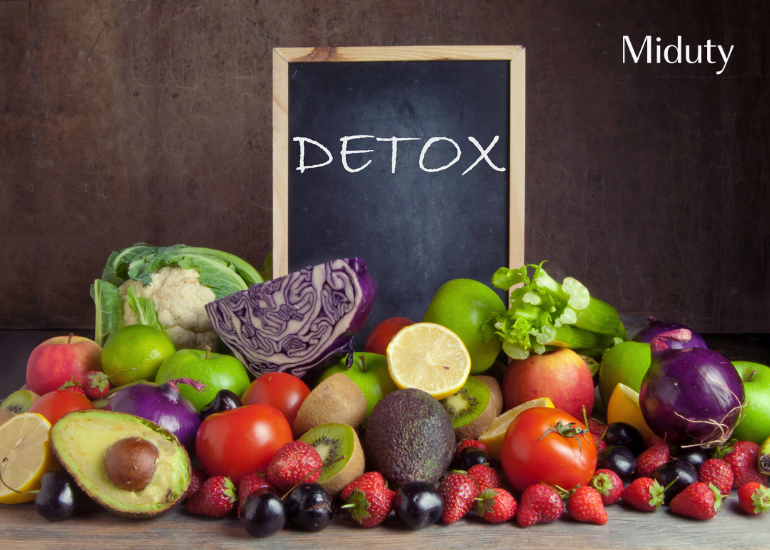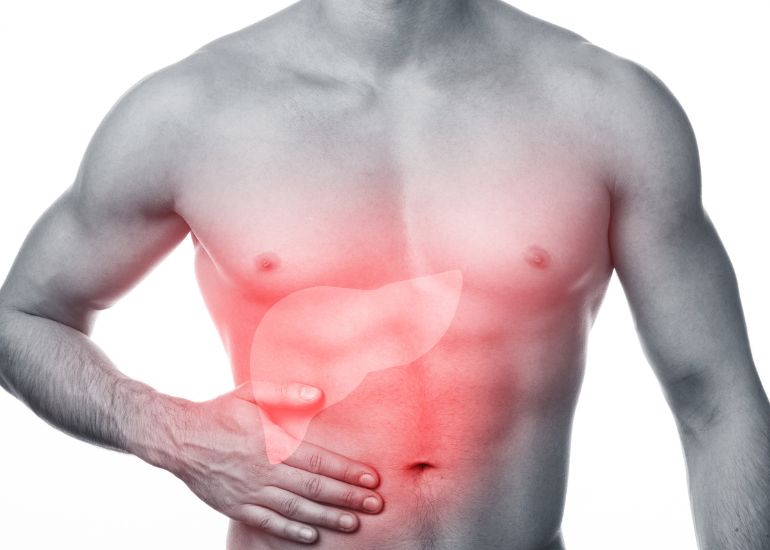
Fatty Liver Symptoms on Face and Skin You Shouldn’t Ignore
Ever wondered why your skin is acting up even when your skincare routine is on point? Maybe it's the strange redness, the dark circles that won't fade, or that constant dullness no cream seems to fix. What if the problem isn't your skin at all, but your liver?
Fatty liver disease is often called a "silent" condition, but it's not always invisible. Your body has its own way of sending distress signals, and surprisingly, your face and skin are often the first to show them. Once you know what to look for, the signs are hard to ignore.
In this blog, we're breaking down the unexpected fatty liver symptoms on face and skin. If you're dealing with unexplained skin changes, it might be time to look beneath the surface—literally.
Understanding Fatty Liver
Fatty liver disease is a condition where fat builds up in the liver cells. This may sound harmless, but over time, it can lead to inflammation, liver scarring (fibrosis), and even liver failure if not addressed. Fat in small amounts is normal, but when more than 5–10 % of your liver's weight is made up of fat, it becomes a problem. Most people don't realize they have it until it's advanced, because the early stages don't always show obvious symptoms.
The scary part? It's often called a "silent disease" for a reason. You might look fine on the outside, but on the inside, your liver could be struggling to function. However, your body does drop some subtle hints, especially through changes in your face and skin. Your skin is your body's largest organ, and when your liver is off track, it often tries to send a message through your skin.
Why Does the Liver Affect the Skin and Face?
Liver issues can show up as skin concerns, but how? It's all about the liver's job. The liver filters toxins from your bloodstream, breaks down hormones, and processes nutrients. When it fails to do this properly, toxins start to build up in the blood. These toxins don't just sit there—they circulate, leading to skin irritation, inflammation, and changes in your skin's texture and tone.
One of the liver's main tasks is metabolizing bilirubin, a yellowish pigment formed during the breakdown of red blood cells. When the liver is damaged, bilirubin can build up in the blood, leading to yellowish skin or eyes (a condition called jaundice).
Also, the liver helps regulate hormones. When hormone levels are off because the liver isn't working properly, it can lead to breakouts, oiliness, and pigmentation issues.
Basically, your liver acts like your body's built-in detox system. When the system gets clogged or damaged, your skin becomes the outlet for all the "junk" trying to escape.
Top 9 Visible Fatty Liver Symptoms on Face and Skin
Fatty liver disease doesn't always come with obvious symptoms—until your skin starts speaking up. If your liver is struggling to function properly, it often reflects through your skin and face long before any lab results do. Here are the 9 most telling signs you should watch for:
1. Yellowish Skin or Eyes (Jaundice)
A yellow tint in your skin or the whites of your eyes is a classic sign of liver trouble. It happens when the liver can't properly process bilirubin, a yellow pigment that builds up in the blood. Jaundice is one of the clearest signals that your liver is under distress.
2. Dark Circles and Puffy Eyes
Chronic liver stress can slow blood flow and cause toxins to accumulate, leading to persistent dark circles and puffiness under the eyes. It's not just from lack of sleep; it could be your liver asking for help.
3. Dull or Pale Complexion
When the liver struggles to eliminate waste and toxins, your skin can lose its natural glow. A dull, washed-out face might mean blood and oxygen aren't circulating properly, hinting at reduced liver efficiency.
4. Itchy, Dry, or Irritated Skin
Itching without a rash can be an early warning sign of bile salt accumulation in the bloodstream due to poor liver function. This can make your skin dry, flaky, and super sensitive—even if you've never had skin issues before.
5. Red or Flushed Face and Spider Veins
Tiny red lines or flushed patches—especially on your cheeks or nose—can indicate hormonal imbalances caused by liver damage. These spider angiomas result from dilated blood vessels due to elevated estrogen levels in the body.
6. Hyperpigmentation and Dark Patches
Uneven skin tone, especially around the eyes, mouth, and forehead, can develop when the liver isn't detoxing properly. These dark spots often resist normal skincare treatments and may grow darker over time.
7. Facial Swelling or "Moon Face" Appearance
Fluid retention caused by reduced liver function can lead to noticeable swelling in the face. This puffiness often appears gradually and is sometimes misattributed to weight gain or inflammation.
8. Frequent Facial Breakouts and Oily Skin
Fatty liver disrupts hormone balance and increases toxin load, both of which can cause adult acne, especially on the jawline, cheeks, or forehead. If your skin has suddenly turned oily or acne-prone, your liver might be struggling in the background.
9. Easy Bruising on the Face or Skin
When your liver isn't producing enough clotting proteins, even light pressure can lead to bruises, often without explanation. If you find yourself bruising easily, especially on delicate facial skin, it's a sign worth investigating.
These symptoms don't always show up all at once. Sometimes, it starts with just one or two signs, slowly building over time. If you're noticing any combination of these changes, especially alongside fatigue or digestive issues, it's time to get your liver checked.
How To Improve Skin & Liver Health Naturally?
Making your liver happy isn't just about popping supplements—it's about building habits that feel good and actually fit into your life. Here's how you can start seeing real changes in both your liver function and skin glow, with some relatable, everyday actions you can take today.
1. Include Foods That Heal Your Liver
Let's be real: your liver doesn't want another crash diet or fancy detox tea. It wants real, nourishing food.
- Leafy greens like spinach or kale aren't just for Instagram salads. Try tossing a handful into your morning smoothie or sautéing them with garlic at dinner.
- Beets and carrots: Roast them in olive oil and add a sprinkle of sea salt—your liver (and taste buds) will love them.
- Garlic and onions might not leave your breath fresh, but they're loaded with sulfur compounds that support detox. Stir them into soups or add them to stir-fries.
- Turmeric: Ever had golden milk? Just warm up almond milk with a dash of turmeric, black pepper, and honey. It's anti-inflammatory and comforting.
- Avocados: Slice one on toast or dice it into your salad. Packed with glutathione, it's like a hug for your liver.
- Green tea: Swap one of your coffee refills for a cup of matcha or brewed green tea. The catechins support fat breakdown in the liver—plus it's super hydrating for the skin.
2. Use Gentle & Natural Skincare
If your liver is overwhelmed, your skin is already under stress. Keep your skincare calm and restorative.
- Use moisturizers with ceramides and hyaluronic acid to restore the skin's barrier—great for dry or flaky liver-related skin issues.
- Try aloe vera gel or niacinamide serum if you're dealing with redness or breakouts. Both are soothing and won't overload your skin.
- Ditch the harsh exfoliants and fragrances. Liver-compromised skin is more sensitive, so go fragrance-free and minimalist.
- Apply broad-spectrum sunscreen every morning—even if you're mostly indoors. UV damage makes pigmentation worse and puts more pressure on your skin to heal.
3. Move Your Body Every Day
You don't need to live at the gym to help your liver.
- Start with walks: Even a 20-minute walk after dinner helps reduce fat accumulation in your liver.
- Try yoga or stretching in the morning. Moves that twist the torso (like spinal twists) help stimulate liver function.
- Add resistance bands or light dumbbells to your routine twice a week. Muscle mass helps your body burn more fat, even while you rest.
4. Drink Enough Water and Sleep Well
It's simple but often skipped: drink more water and sleep better.
- Start your day with a glass of warm water and lemon—it kickstarts your digestion and gently stimulates the liver.
- Carry a reusable water bottle and aim for 2–3 liters per day. Hydration helps flush toxins and keeps your skin plump.
- Prioritize sleep. 7–9 hours is when your liver regenerates and your skin repairs.
Start with just one of these tips, and build from there. Your liver is resilient, but it needs you to support it consistently. And when you do? Clearer skin, more energy, and a face that looks refreshed and alive await you.
Your liver works 24/7. Give it the tools to shine—and you'll shine too.
5. Easy Supplement Picks for Liver Support
While working on eating better, moving more, and caring for your skin gently, adding the right supplements can offer that extra push to your liver and your skin. But let's keep it simple. You don't need a shelf full of capsules.
Two of the most effective and research-backed liver-supporting ingredients are Milk Thistle and N-Acetyl Cysteine (NAC). These aren't quick fixes, but when used consistently, they can help your liver detox more efficiently and support visible skin improvements.
- Milk Thistle has long been valued for its liver-healing properties. Its key ingredient, silymarin, helps protect liver cells, reduce inflammation, and promote regeneration. If you're looking for serious results, opt for a high-potency Milk Thistle supplement with 80% standardized silymarin (This potency is maximum available in the market), one of the most concentrated formulas available—making it perfect for giving your liver the daily support it needs to process toxins and keep your skin glowing.
- NAC is another powerhouse, boosting levels of glutathione—the body's most important antioxidant for detoxification. It helps the liver clear harmful substances more efficiently, reducing internal stress that often shows up on your face as breakouts, puffiness, or dullness. Choose a NAC supplement, formulated with maximum potency and absorption, designed to help you feel—and look—better from the inside out.
With their combined power, these two high-potency supplements offer an easy, effective way to strengthen your liver's defenses and bring out the natural clarity and glow in your skin.
Conclusion
The skin doesn't lie. It reflects what's happening deep within—and your liver might just be the missing piece of your skincare puzzle. If you've been chasing creams, serums, and facials with no lasting results, maybe it's time to shift your focus inward.
Fatty liver disease might be silent at first, but your face tells a story—of inflammation, imbalance, and overwhelm. The good news? Your liver is incredibly resilient. With the right food, habits, hydration, and yes, a few smart supplements, you can support its healing journey.
And as your liver gets back on track, don't be surprised if the glow returns to your face. Skin that once looked tired, blotchy, or irritated can become vibrant, smooth, and radiant again.
Healing your liver isn't a quick fix—but it's a powerful one. Trust your body, be patient, and commit to the process. Your skin—and your entire body—will thank you.
Frequently Asked Questions on Fatty Liver Symptoms on Face and Skin
Q1: Does fatty liver affect the face?
Yes, fatty liver can affect the face by causing symptoms like dull skin, puffiness, dark circles, breakouts, and yellowing of the eyes or skin due to toxin buildup and impaired detoxification.
Q2: What are the early signs of liver damage on skin?
Early signs include dry or itchy skin, unexplained rashes, spider veins, yellowish skin (jaundice), and increased sensitivity or redness—often appearing before any internal symptoms are noticed.
Q3: Can the liver cause bad skin?
Absolutely. When the liver is sluggish or overloaded, toxins may accumulate in the body and show up as acne, eczema, hyperpigmentation, oiliness, or premature aging on the skin.
Q4: What does your face look like with liver disease?
Common facial signs of liver disease include yellowing of the eyes, dark under-eye circles, puffiness, facial redness or spider veins, and a generally tired, inflamed appearance.
Q5: How is liver connected to the skin?
The liver is your body's main detox organ. When it's not functioning well, toxins can build up and try to escape through the skin, leading to visible issues like irritation, breakouts, or discoloration.
References













